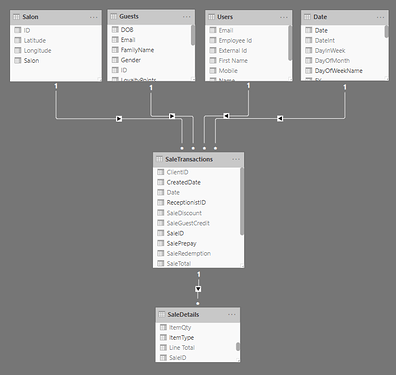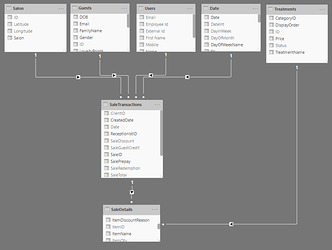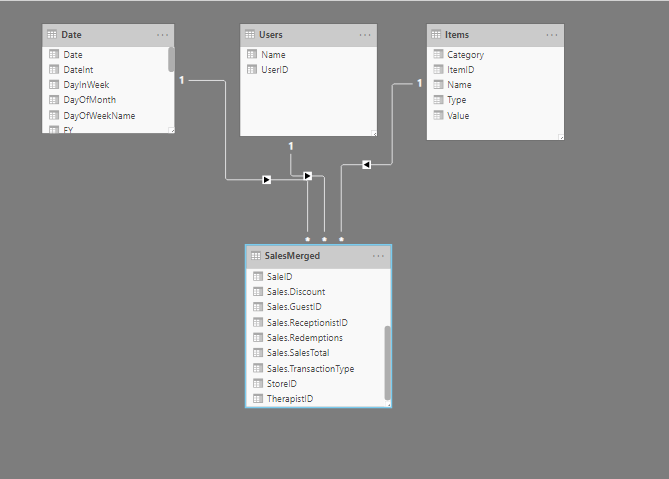Hi all, within this topic I’m looking for opinions on the most efficient method to setup by Data Model.
Through my investigations into Enterprise DNA Fact Table and Data Model examples, most have the following commonalities:
- Fact Table (aka: Sales Table)
1 Row = 1 Transaction = 1 Customer = 1 Product = x product quantities.
This understanding has led me to review my Fact Table and identify differences between the fundamentals of how my organisations data differs from the examples.
- Fact Table 1 (aka: SaleTransactions)
1 Row = 1 Transaction = 1 Customer = 1 SaleID - Fact Table 2 (aka: SaleDetails)
x rows = 1 SaleID = x products = x product quantities
Where I presume a “one-to-many” relationship of “SaleTransactions-to-SaleDetails” should exist; Filter Tables of Date, Location, Guests etc all are “one-to-many” which cascade (waterfall) into the “SaleTransactions” table.
This image is a display of the described Data Model.
- Do any of you have similar Data Models?
- Do you see anything wrong with the current layout?
e.g. Cross filter direction of “SaleTransactions-to-SaleDetails”, should be BOTH not single?
Hurdles I face with this Data Model:
- Products are recorded in “SaleDetails” which needs a Filter Table connected.
- Do you believe I’m still on the right path here?
- Transaction vs Item level: Discounts and Redemptions
- Scenario 1 (Text based)
A customer purchases 3 items in 1 visit and gets a discount on 1 product and a redemption on the total transaction price.- Their transaction is recorded on two tables.
1 row in “SaleTransactions” for the completed transaction with redemption off total
3 rows in “SaleDetails” one for each purchased item 1 with its discount off it’s line total
- Their transaction is recorded on two tables.
- Scenario 2 (PBI File)
Same structure as ‘Scenario 1’ but with sample data from organisation
anthonyb.DemoData.pbix (190.0 KB)
- Scenario 1 (Text based)
This should be simple right? From the courses and insights Sam has shared I have so many methods of connecting and calculating this data.
- I am looking for a simple, power efficient and accurate measure to get a [Total Sales] measure that works in all contexts: Dates, Products, Customers, Locations, Users.



